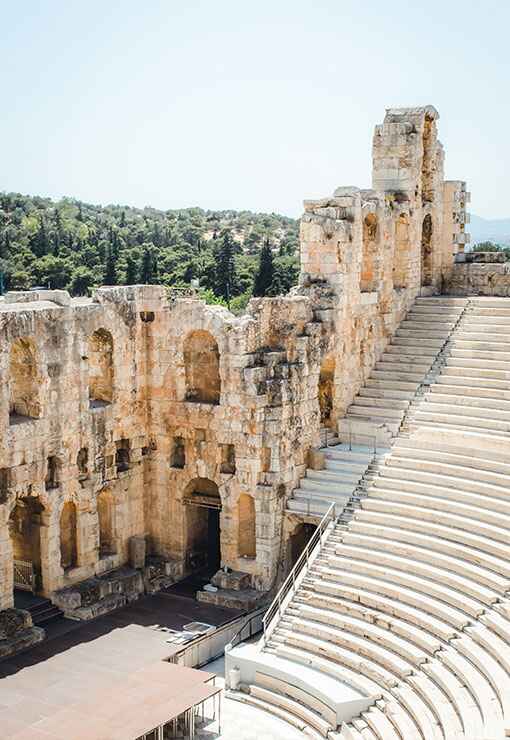

The Early Bronze Age (Aegean civilisation is a general term for the Bronze Age civilisations of Greece) in Ancient Greece, spanning roughly from 3000 to 2000 BCE, was a crucial period marked by significant developments in technology, trade, and cultural practices. Here is an overview of the Early Bronze Age in Ancient Greece:
Emergence of Early Bronze Age Cultures: During the Early Bronze Age, distinct cultures began to emerge in the Aegean region. Notable among these were the Cycladic and Early Helladic cultures, which laid the foundations for later civilisations.
Cycladic Culture (circa 3000–2000 BCE): The Cycladic islands, including Thera, Melos, and others, were home to the Cycladic culture. This seafaring society engaged in trade and created distinctive marble figurines and pottery. Their activities set the stage for broader cultural interactions in the region.
Early Helladic Culture (circa 2800–2000 BCE): The Early Helladic period saw the development of settlements on the Greek mainland. These early communities engaged in agriculture, pottery production, and trade, forming the basis for later Mycenaean civilisation.
Technological Advances: Bronze metallurgy played a pivotal role in technological advancements during this period. The use of bronze, an alloy of copper and tin, revolutionised tool and weapon production, contributing to the growth of Aegean cultures.
Settlement Patterns: Early Bronze Age communities on the mainland and islands established permanent settlements. These early towns featured simple architecture, with houses constructed from mudbrick and stone.
Trade Networks: Trade networks expanded during the Early Bronze Age, connecting different regions of the Aegean. Archaeological evidence indicates the exchange of goods such as metals, ceramics, and other commodities.
Ceramics and Pottery: Pottery production was a significant aspect of material culture during this period. Early Bronze Age pottery was typically handmade and featured simple shapes and designs. The Cycladic and Early Helladic cultures produced distinctive ceramic vessels.
Burial Practices: Burial practices evolved during the Early Bronze Age. Intramural burials and simple grave structures, such as cist graves, were common. Grave goods, including pottery and personal items, provided insights into the material culture of the time.
Religious and Symbolic Practices: Evidence of religious and symbolic practices is limited, but certain artefacts and burial customs suggest a growing complexity in spiritual beliefs. Ritualistic practices may have played a role in community life.
Transition to the Middle Bronze Age: The Early Bronze Age laid the groundwork for subsequent cultural developments in the Aegean. The transition to the Middle Bronze Age (circa 2000–1600 BCE) would witness the rise of more complex societies, setting the stage for the Minoan and Mycenaean civilisations.
The Early Bronze Age in Ancient Greece was a formative period marked by the emergence of distinct cultures and technological advancements. The developments during this era set the trajectory for the rich cultural tapestry that would unfold in the Aegean region in the centuries to come.
| Start Date | 2900 BC |
|---|---|
| End Date | 2000 BC |

During the Early Bronze Age, the Cycladic civilization sculpted intricate marble figurines that served as grave markers, depicting human forms in abstract yet elegant shapes, influencing modern minimalist art movements.
Ancient Greek art and architecture, with its harmonious proportions and timeless elegance, continue to inspire awe and admiration millennia later.
Discover
Greek mythology, a rich tapestry of gods, heroes, and mythical creatures, captivates the imagination with its tales of love, betrayal, and epic adventures that delve into the depths of the human psyche.
Discover
Ancient Greek history, marked by remarkable achievements in democracy, philosophy, and warfare, shaped the foundation of Western civilization, leaving an indelible legacy of innovation and cultural influence that continues to resonate to this day.
Discover
The ancient Greek Olympics, held in Olympia every four years, celebrated athleticism, unity, and cultural pride, serving as a testament to the enduring spirit of competition and excellence that transcends time and borders.
Discover
Ancient Greek wars, such as the Persian Wars and the Peloponnesian War, were pivotal conflicts that shaped the course of history, highlighting the struggle for power, independence, and the clash of civilizations in the ancient Mediterranean world.
Discover
Ancient Greek culture and society, characterized by its emphasis on art, philosophy, and civic engagement, fostered a vibrant intellectual and social landscape where innovation flourished, democracy thrived, and the pursuit of knowledge and excellence was celebrated as fundamental values of civilized life.
Discover
Find out more about ancientgreece.com